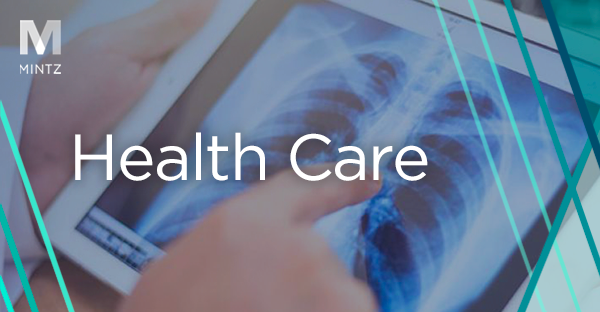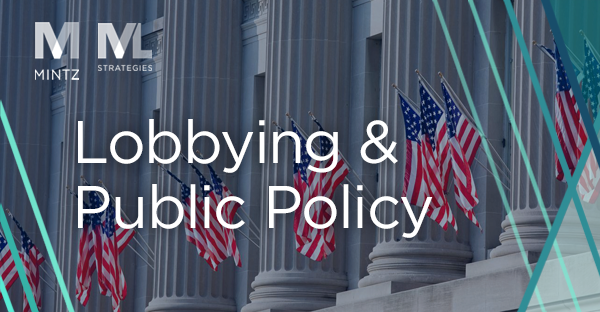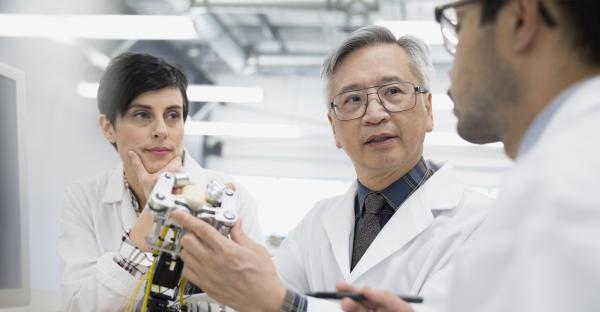
Technology
Viewpoints
Filter by:
The Financing Environment and Current Trends in Robotics
June 9, 2025 | Blog | By Marc Mantell, Scott P. Dunberg, Carolina Säve, Danielle Barney
As we head into the second half of 2025, the prospects for innovation in robotics and artificial intelligence (AI) seem limitless. It is difficult to find an industry that hasn’t touted the potential for robotics and AI to bring significant growth and advancement: from agriculture to warehousing and logistics. Key sectors, including healthcare, financial services, retail, and manufacturing, are integrating robotics into their physical processes and attempting to optimize other aspects of their businesses through the use of AI, including the use of surgical robotics to enhance precision and efficiency in medical procedures and the adoption of robotics to increase safety, productivity and quality in manufacturing and logistics.
The State of the Funding Market for AI Companies: A 2024 - 2025 Outlook
March 10, 2025 | Blog | By Jeremy Glaser, Kevin M. Yao
Artificial intelligence (AI) has emerged as an influential technology, driving notable investments across various industries in recent years. In 2024, venture capital (VC) funding for AI companies reached record levels, signaling ongoing interest and optimism in the sector’s potential. Looking ahead, 2025 is anticipated to bring continued innovation, with promising funding opportunities and a growing IPO market for AI-driven businesses.
Key Considerations for the Prospective Blockchain Investor
February 7, 2025 | Blog | By Daniel A. Lerner, Daniel DeWolf
Prospective purchasers of blockchain assets can now navigate through global exchanges (i.e., Coinbase or Kraken) to invest in various forms of tokens. Investments in tokens, however, are only the tip of the iceberg for those who are interested in undertaking financial exposure in blockchain projects.
Colorado AI Systems Regulation: What Health Care Deployers and Developers Need to Know
June 27, 2024 | Blog | By Pat Ouellette
As the first state law to regulate the results of Artificial Intelligence System (AI System) use, Colorado’s SB24-205, “Concerning Consumer Protections in Interactions with Artificial Intelligence Systems” (the Act), has generated plenty of cross-industry interest, for good reason. In some ways similar to the risk-based approach taken by the European Union (EU) in the EU AI Act, the Act aims to regulate developers and deployers of AI Systems, which are defined by the Act as “any machine-based system that, for any explicit or implicit objective, infers from the inputs the system receives how to generate outputs, including content, decisions, predictions, or recommendations, that can influence physical or virtual environments.”
Healthcare Provider Beware: Massachusetts Federal Court Largely Permits Tracking Technologies and Wiretapping Claims To Proceed
May 16, 2024 | Blog | By Scott Lashway, Matthew Stein
HHS, ONC HTI-1 Final Rule Introduces New Transparency Requirements for Artificial Intelligence in Certified Health IT
January 8, 2024 | Blog | By Pat Ouellette
The Department of Health and Human Services (HHS) was tasked with formalizing and coordinating efforts to regulate artificial intelligence (AI) in health care under the November 2023 Executive Order on the Safe, Secure, and Trustworthy Development and Use of Artificial Intelligence (AI EO) and has already begun its regulation of AI within certain certified health IT. HHS and Office of the National Coordinator for Health Information Technology (ONC) recently published the Health Data, Technology, and Interoperability: Certification Program Updates, Algorithm Transparency, and Information Sharing (HTI-1) Final Rule.
Biden Executive Order Calls for HHS to Establish Health Care-Specific Artificial Intelligence Programs and Policies
November 2, 2023 | Blog | By Pat Ouellette, Lara Compton, Madison Castle
On October 30, 2023, the Biden Administration released and signed an Executive Order on the Safe, Secure, and Trustworthy Development and Use of Artificial Intelligence (Executive Order) that articulates White House priorities and policies related to the use and development of artificial intelligence (AI) across different sectors, including health care.
NFTs: A Flash in the Crypto Pan or Virtual Gold? (Part 1)
August 2, 2022 | Blog | By Edmund P. Daley, Cory S. Flashner, Frank Gerratana
Non-fungible tokens (“NFTs”) grabbed mainstream attention in 2021 with news of digital art and collectibles selling for millions. But headlines reporting NFTs selling for millions were short-lived. “Crypto winter” cast a chill across the crypto world – prices and interest in the digital art and images that became synonymous with NFTs plummeted.
Benefits of Using Copyrights to Protect Artificial Intelligence and Machine Learning Inventions
July 11, 2022 | Blog | By Monique Winters Macek, Meena Seralathan
We previously discussed which portions of an artificial intelligence/machine-learning (“AI/ML”) platform could be patented or protected under trade secret, such as related to biotech and synthetic biology. Equally important to the discussion of how to protect components of an AI/ML platform, however, is the extent to which copyright protection may be useful or beneficial to the developer of the platform. In this post, we explain what can be protected by copyright in an AI/ML platform. We also explore when it is appropriate to protect portions of AI/ML platforms using a copyright, how to properly enforce copyrights, as well as when to consider using copyright protection over patent or trade secret protection.
Five Tips For Every In-House Counsel Launching an Open Source Software Program
July 5, 2022 | Blog | By Marguerite McConihe, Greg Penoyer
Used properly, Open Source Software (OSS) is an excellent tool. It saves your business time and money, enables interoperability of product platforms, and developers love it. But used improperly, it can be financially and operationally devastating. For example, the statutory damages for failure to properly adhere to the OSS copyright notice can be up to $150,000 per act of infringement. Those damages can quickly add up to serious consequences, whether preventing a sale or merger of your company or the destruction of the value of the affected products. Another serious risk is that once OSS is used in your code base and deployed in distributed products, if your tech teams are not monitoring and applying bug fixes, known vulnerabilities become Trojan horses of opportunity for bad actors. The good news is that protecting your company from these types of risks is rather simple. We have outlined below key steps and processes in-house counsel should take to work with your business stakeholders to mitigate these risks.
Examining Art Units to Avoid Subject Matter Eligibility Challenges for Bioinformatics and AI-related Patents
November 18, 2021 | Blog | By Terri Shieh-Newton, Mark Hammond
AI in Biotech and Synthetic Biology: What Can Be Protected? What Should Be Kept Secret?
August 11, 2021 | Blog | By Joshua Berk, Terri Shieh-Newton
It’s Not Such a Breeze: Assessing Your Service Providers after SolarWinds
March 2, 2021 | Blog | By Michael Graif, Cynthia Larose
The Implications of Trump's Executive Order and Section 230 of the Communications Decency Act
June 3, 2020 | Blog | By Christian Tamotsu Fjeld, Christopher Harvie
FCC Simplifies Evaluations of Certain Wireless Medical Devices
December 11, 2019 | Blog
Blockchain in Energy: Regulatory Sandboxes and the Clean Peak Standard
November 6, 2019 | Blog
Recap of Federal Register Notice on Artificial Intelligence (AI) Patent Issues
September 17, 2019 | Blog | By Marc Morley, Michael Renaud
Emerging Legal Trends AI: Can Israel Join the U.S. and Europe as a Leader in AI Protections?
June 10, 2019 | Blog | By Michael Renaud, Asa Kling, Marguerite McConihe
Blockchain in Energy: A Practical Path to Standardization
May 15, 2019 | Blog
Trump Administration Botnet Report Will Impact IoT Device Makers – Things You Should Know
June 25, 2018 | Blog | By Christopher Harvie, Cynthia Larose
Explore Other Viewpoints:
- Data Centers & Digital Infrastructure
- AI: The Washington Report
- Antitrust and Federal Regulation
- Appellate
- Arbitration, Mediation & Alternate Dispute Resolution
- Artificial Intelligence
- Awards
- Bankruptcy & Restructuring
- California Land Use
- Cannabis
- Class Action
- Complex Commercial Litigation
- Construction
- Consumer Product Safety
- Corporate Governance (ESG)
- Cross-Border Asset Recovery
- DEI Legal Developments
- Debt Financing
- Direct Investing (M&A)
- Diversity
- EB-5 Financing
- Education & Nonprofits
- Employment
- EnforceMintz
- Environmental (ESG)
- Environmental Enforcement Defense
- Environmental Law
- Environmental, Social, and Corporate Governance (ESG)
- FDA Regulatory
- False Claims Act
- Federal Circuit Appeals
- Financial Institution Litigation
- Government Law
- Growth Equity
- Health Care
- Health Care Compliance, Fraud and Abuse, & Regulatory Counseling
- Health Care Enforcement & Investigations
- Health Care Transactions
- Health Information Privacy & Security
- IP Due Diligence
- IPRs & Other Post Grant Proceedings
- Immigration
- Impacts of a New US Administration
- Insolvency & Creditor Rights Litigation
- Institutional Investor Class Action Recovery
- Insurance & Financial Services
- Insurance Consulting & Risk Management
- Insurance and Reinsurance Problem-Solving & Dispute Resolution
- Intellectual Property
- Investment Funds
- Israel
- Licensing & Technology Transactions
- Life Sciences
- Litigation & Investigations
- M&A Litigation
- ML Strategies
- Managed Care
- Medicare, Medicaid and Commercial Coverage & Reimbursement
- Mergers & Acquisitions
- Patent Litigation
- Patent Prosecution & Strategic Counseling
- Pharmacy Benefits and PBM Contracting
- Portfolio Companies
- Privacy & Cybersecurity
- Private Client
- Private Equity
- Pro Bono
- Probate & Fiduciary Litigation
- Products Liability & Complex Tort
- Projects & Infrastructure
- Public Finance
- Real Estate Litigation
- Real Estate Transactions
- Real Estate, Construction & Infrastructure
- Retail & Consumer Products
- Securities & Capital Markets
- Securities Litigation
- Social (ESG)
- Special Purpose Acquisition Company (SPACs)
- Sports & Entertainment
- State Attorneys General
- Strategic IP Monetization & Licensing
- Sustainable Energy & Infrastructure
- Tax
- Technology
- Technology, Communications & Media
- Technology, Communications & Media Litigation
- Trade Secrets
- Trademark & Copyright
- Trademark Litigation
- Unified Patent Court (UPC)
- Value-Based Care
- Venture Capital & Emerging Companies
- White Collar Defense & Government Investigations
- Women's Health and Technology







